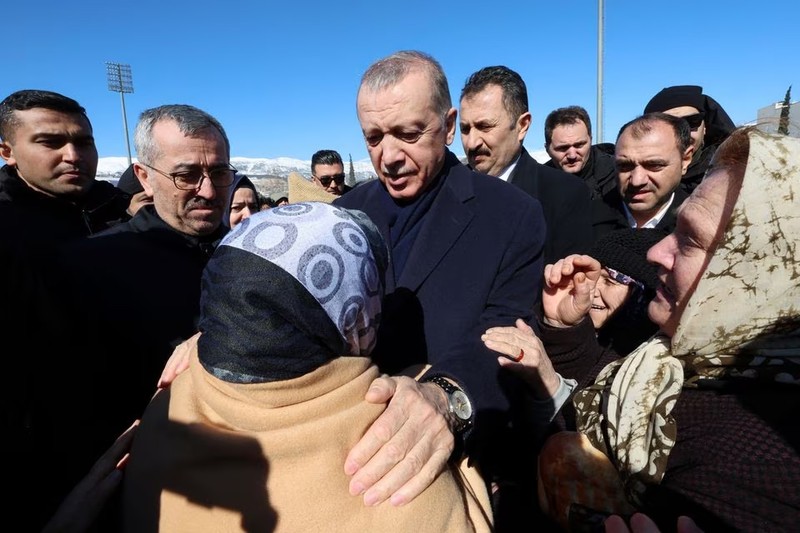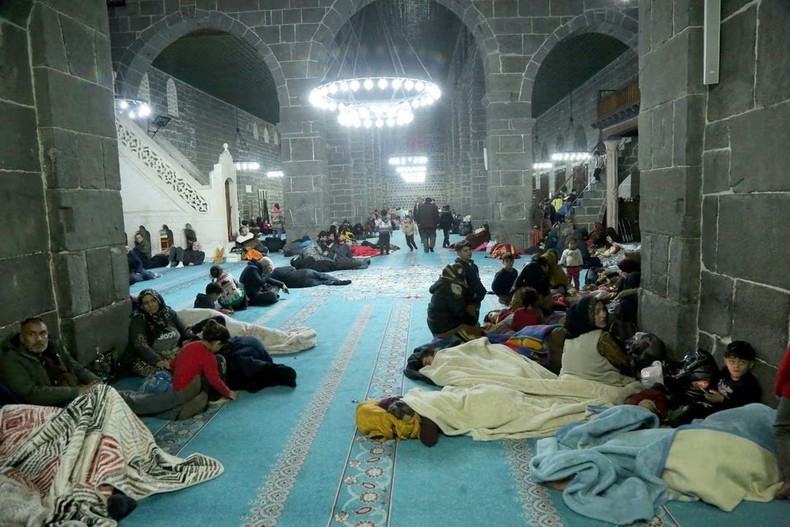
Turkish President Erdogan meets people in Kahramanmaras, February 8, 2023. (Photo: Press Office of the President of Turkey)
The death toll from earthquakes in Turkey and Syria is forecast to continue to rise. One of the reasons why this earthquake caused so many casualties was the disaster that occurred early in the morning, when many people were sleeping.
On February 8, President Erdogan acknowledged there were problems in the initial response of the Turkish government after the devastating earthquake in the south of the country.
During a visit to the disaster area, Mr. Erdogan said rescue operations were going on as usual, and pledged that no one would be left homeless.
Across southern Turkey, people are looking for temporary shelter and food amid the frigid winter weather, as noted by Reuters news agency. Some are still waiting by the rubble, where their family and friends may be buried as rescuers search for survivors.
Many people in the disaster area slept in their cars or covered themselves with blankets on the road during the inclement weather.

Ulu Church became a refuge for people in Diyarbakir, Turkey. (Photo: Reuters)
About 13.5 million people in an area stretching about 450km from Adana in the west to Diyarbakir in the east were affected by the February 6 quake, Turkish officials said.
Meanwhile, in Syria, many deaths were recorded in Hama, about 250km from the epicenter. According to Syrian state media, more than 298,000 people in government-controlled areas have been displaced and 180 temporary shelters have been opened to serve them.
More than 70 countries, territories and international organizations have offered to assist Turkey in responding to the disaster. In Syria, aid efforts are more complicated by the lingering conflict in the Middle Eastern country.